
Platforms: PS5 (reviewed), Xbox Series X/S
Price: $69
Date: July 19, 2024
Genre: Sports
For those who kept the faith, the return of an EA-developed college football game has been a long time coming. Football fans have waited nearly 11 years for EA Sports College Football 25.
With so much pent-up demand, EA had to get their return to the series correct. There was too much time in between, too many expectations, too many wishlists.
Remarkably, EA has delivered by producing one of the best pigskin games in years. College Football 25 is fluid, fast and feels like a throwback to the best NCAA football games. However, there are some flaws, most notably a lackluster Road to Glory mode and a disappointing lack of tutorials to teach new and returning players intricacies of the updated controller schemes.
If you’re a college football fan or just a fan of sports games, read my full College Football 25 review to find out why you need to get back on the gridiron.
EA Sports College Football 25: The Basics
- What is it? EA Sports College Football 25 is the first new college football game in 11 years. It recreates the American college football experience and lets you play as some of the best schools in the country (and some of the worst). It now includes the likenesses of players that will actually take the field this fall.
- Who is it for? College football fans, first and foremost. After that, anyone who ever played an NCAA game and yearned for the franchise to return, and also Madden fans disappointed by the downturn the franchise has taken in recent years.
- What’s the price? The standard edition of College Football 25 costs $69. There is also a $99 Deluxe Edition and $149 MVP Bundle edition which includes Madden 25 (the new one, not the one from 10 years ago). The different editions include a selection of extra digital content.
- What other games has the developer made? EA Orlando (formerly Tiburon) stewarded the NCAA college football series from 1998 until 2013 when NCAA 14 Football was released. They also work on the Madden series and EA’s PGA Tour franchise.
- What games is this similar to? This is a continuation of the NCAA football franchise and mainly competes with EA’s own Madden series, though the audiences are different.
Hut, hut, HIKE
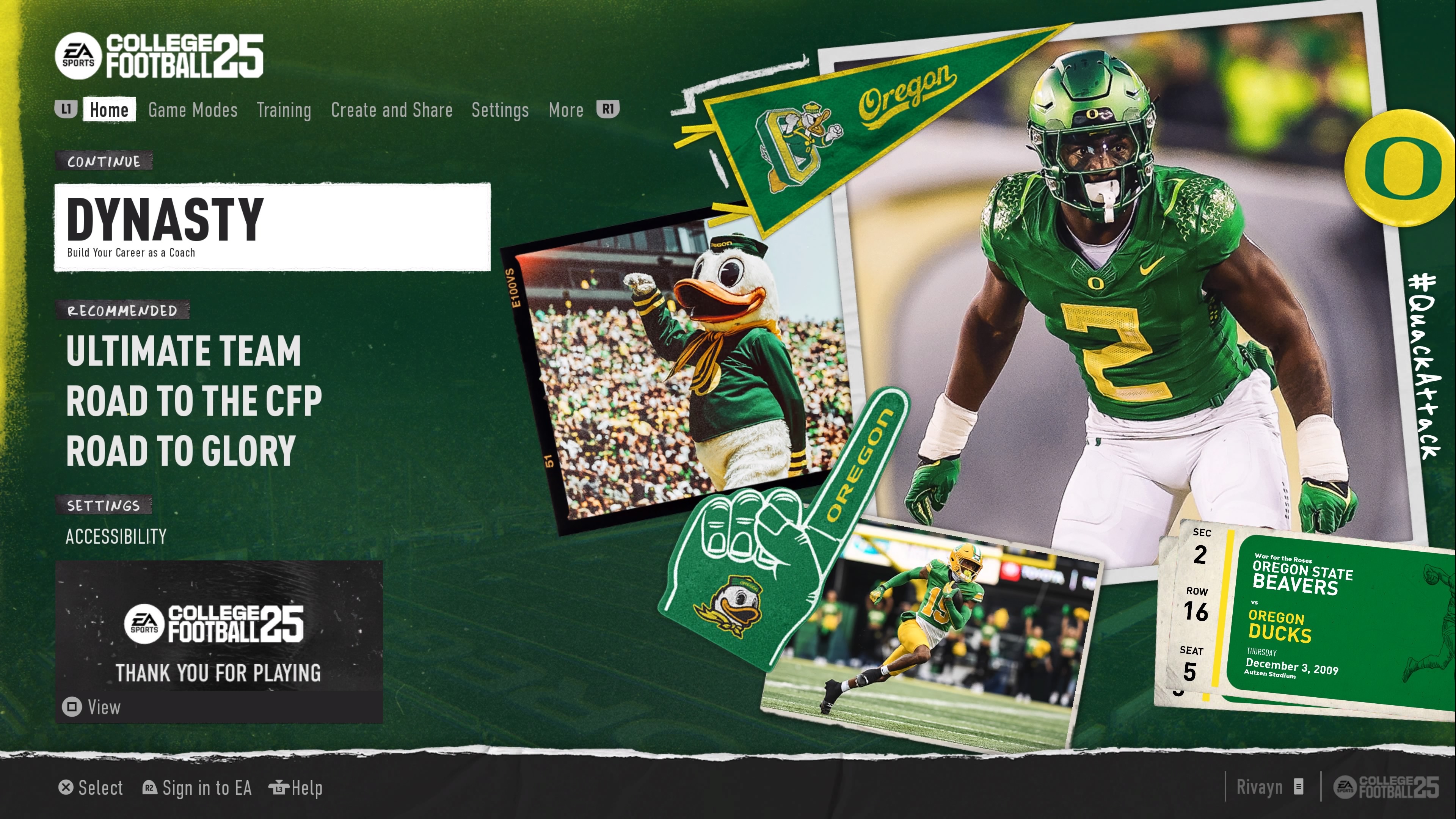
The fundamentals of College Football 25 will feel familiar to anyone who has played an EA football game in the last 20 years. However, some changes are both a boon and an issue.
Running backs work the same, and defending is pretty much a carbon copy of what you have seen in previous NCAA games. Catching the ball is slightly updated with Madden’s different buttons to corral the ball. For example, Square catches and runs, and X securely catches the ball. It doesn’t feature spectacular catches like Madden, so no Justin Jefferson circus-act receptions for you.
The real changes are in the passing game. EA Orlando put in four options for passing. The revamped passing mode is the default, but players can choose from placement, placement/accuracy, or classic, depending on their play style. NCAA 14 utilized classic, which relies on the quarterback’s in-game ratings. Placement and placement/accuracy are similar but offer more user control over the power of the pass and accuracy of the thrown ball.
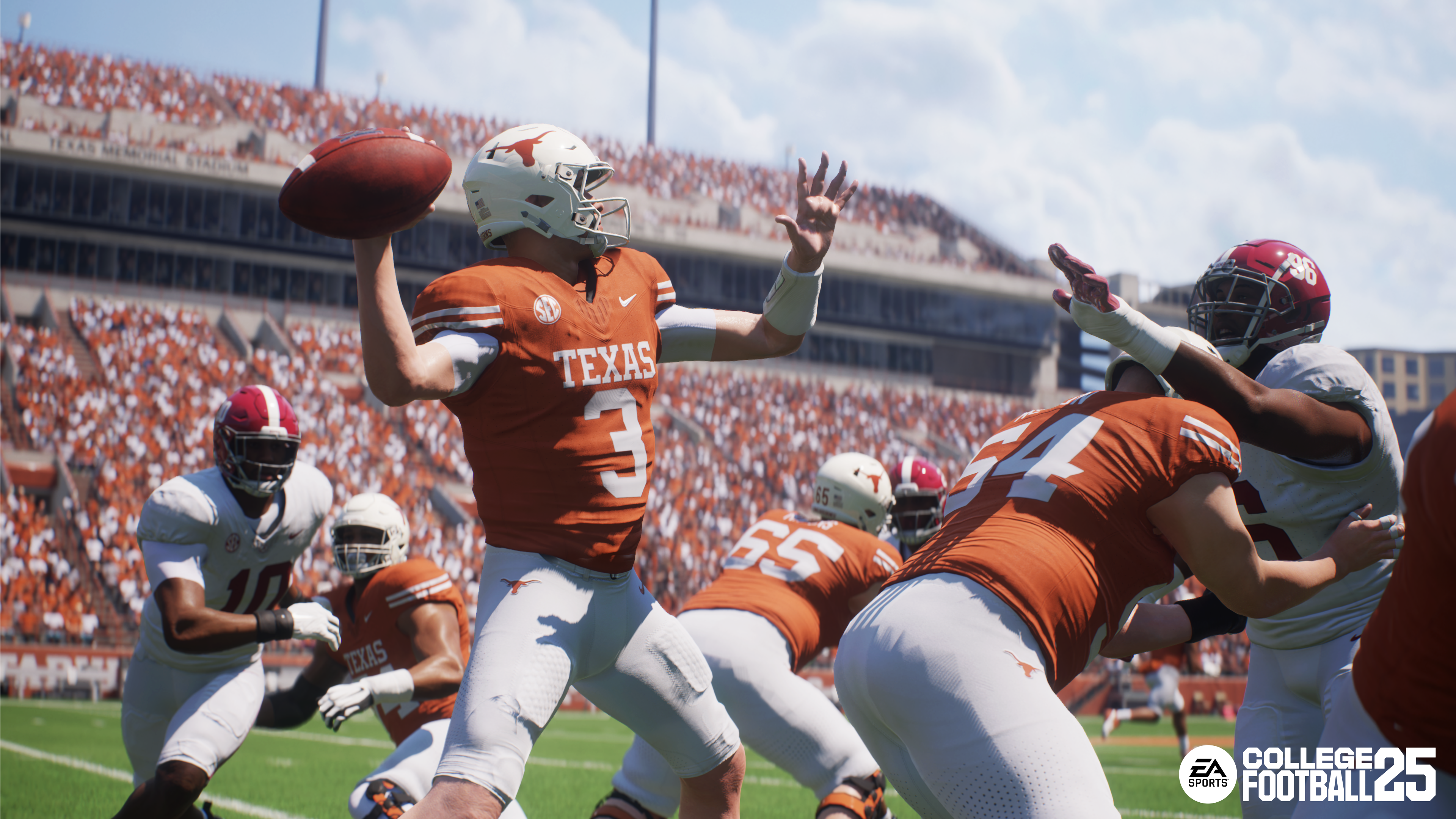
Revamped brings more nuance to the quarterback position by giving players the most control. You are in charge of the arc of the pass, the power and the location.
While holding the receiver input a meter appears over the QB which determines how much power goes into the pass. This meter also determines accuracy as the longer you hold the button down, the less likely the pass will be accurate. It also depends on what the QB is doing; attempting a running pass causes the meter to go red almost immediately and you are less likely to complete the pass. But if you set the quarterback’s feet, the meter will only go to yellow and the odds of the receiver catching the ball go up.
EA has talked a lot about how CFB 25 offers more layered passing. This means that you can thread the needle between defenders more accurately or use touch passes to get the ball to a receiver sandwiched in a zone between a linebacker and an oncoming strong safety.
This is accomplished with the new placement control, where you move the left stick to determine in what direction you want the ball to go. If a defender is in lockstep with your receiver, you might pull the stick down to underthrow the pass, causing your receiver to come back to the ball. Or you can push it up and to the left to place the ball further downfield and out of reach of a trailing defender, a classic back shoulder throw.
The revamped passing actively makes you think like a quarterback when you’re playing, beyond just reading the defense and looking for an open guy. Now, you can create openings and strategize your way around defenders. Classic mode may feel familiar, but the revamped option opens up the game.
But how do I play?
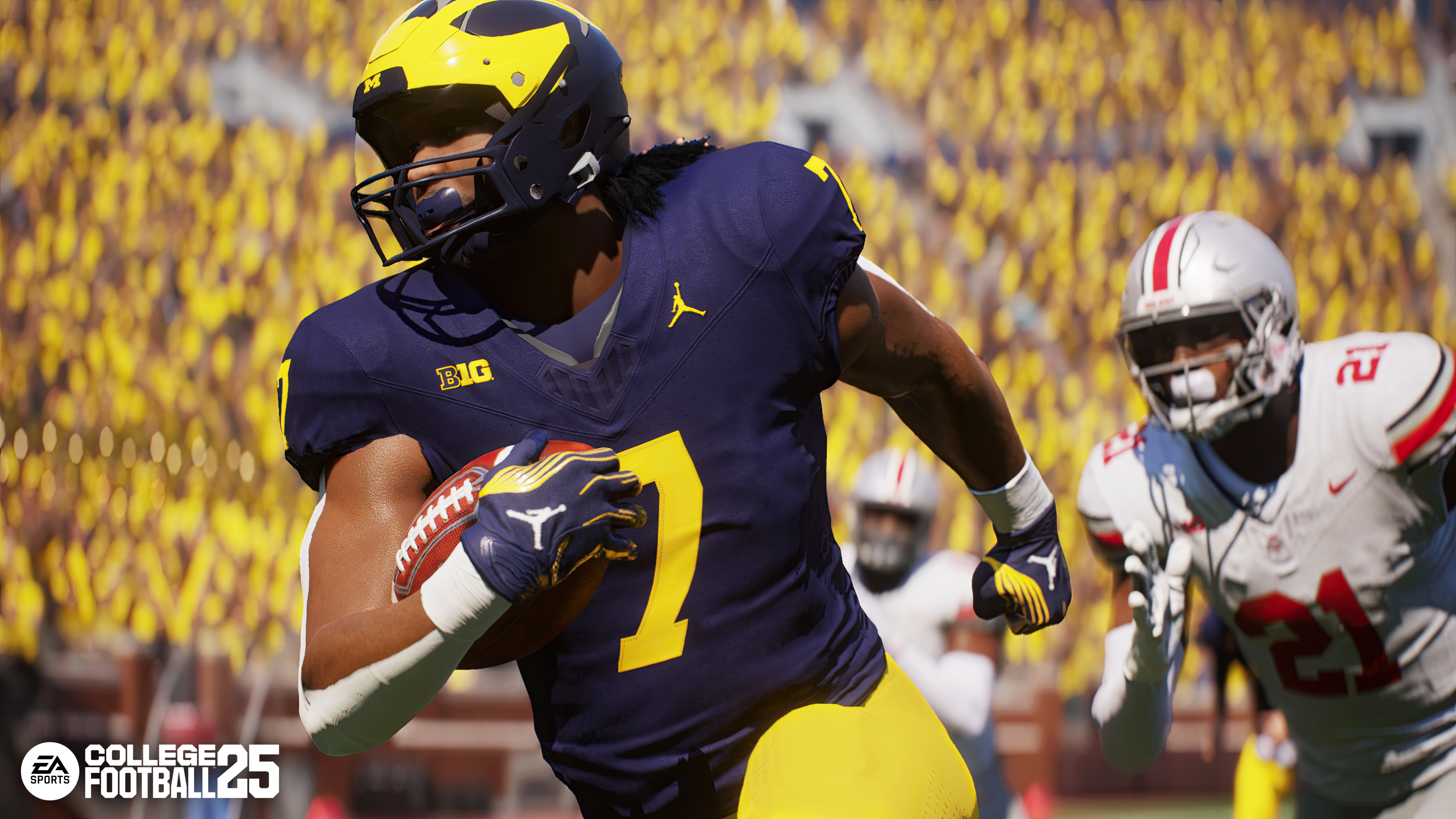
Unfortunately, the game doesn’t tell you any of this. There is no tutorial mode in College Football 25. There is an open-ended practice mode where you can run the same play over and over to get the mechanics down. There are also mini-games that put players in specific situations and have them score points (similar to EA Sports FC 24 or Madden’s training mini-games). Ultimate Team mode has an Ultimate Team 101 section with challenges that kind of teaches the fundamentals of football but don’t actually teach you the game’s controls.
I didn’t even know about the left stick placement feature until I talked to a friend who bought early access and was raving about it. I had to look up articles that the development team released to figure out what the dude was talking about. I won’t be the only person who didn’t read dev diaries to see what control schemes got updated.
This game is unfriendly to beginners or those returning to college football after over a decade away. It is frustrating that there is no dedicated tutorial mode in the game.
How's it looking?

EA struggled to make Madden shine with the Frostbite Engine, but in CFB 2025, it absolutely works. Some of this may be related to the pageantry of college football with every team getting unique introductions, especially those with pre-game traditions like Clemson’s players sprinting downhill and around Howard Rock or the Colorado Buffaloes running a live bison down the field.
I found having different broadcast teams inspired. Important games during the season will get the ESPN A-Team of Kirk Herbstreit and Chris Fowler, but day-to-day games are more likely to feature a booth of Rece Davis, Jesse Palmer and David Pollack. It feels more dynamic and opens up the game for different soundbites than the rote ones you’re used to.
On the field, the game flows smoothly and quickly. In fact, despite the realism factor, it has a bit of an arcade feel, which is not a detriment. It makes the game snappy and fun.
One flaw I’ve found is that you can’t really skip game introductions. This is annoying when you’re running through modes like the Ultimate Team 101 challenges where there is an intro even in the mini-games that immediately end once you’ve completed the challenge.
Mode ala Mode
There are five modes of play in College Football 2025. The simplest is Play Now, where you pick a team and battle it out against another team on the field. This can either be against a CPU or a head-to-head with a friend. Below, I’ll take a look at the other four modes.
Road to Glory
Road to Glory is the CFB 25 athlete career mode. You build a player and after answering a couple of questions get to pick a team to ply your trade. Most people will be disappointed with the CFB 25 attempt since it feels very bare-bones.
This year’s version lets you pick from four tiers of types of players from the five-star elite player to the two-star underdog. From there, you work through the season earning your coach’s trust, attending school and building up a brand following. Teachers, players and friends will text your athlete throughout the season offering “choices'' that can affect your standing. Texting seems to quickly disappear, I was genuinely surprised when after weeks of game time, I would suddenly get a text from a tutor with an event that did next to nothing for my ratings.
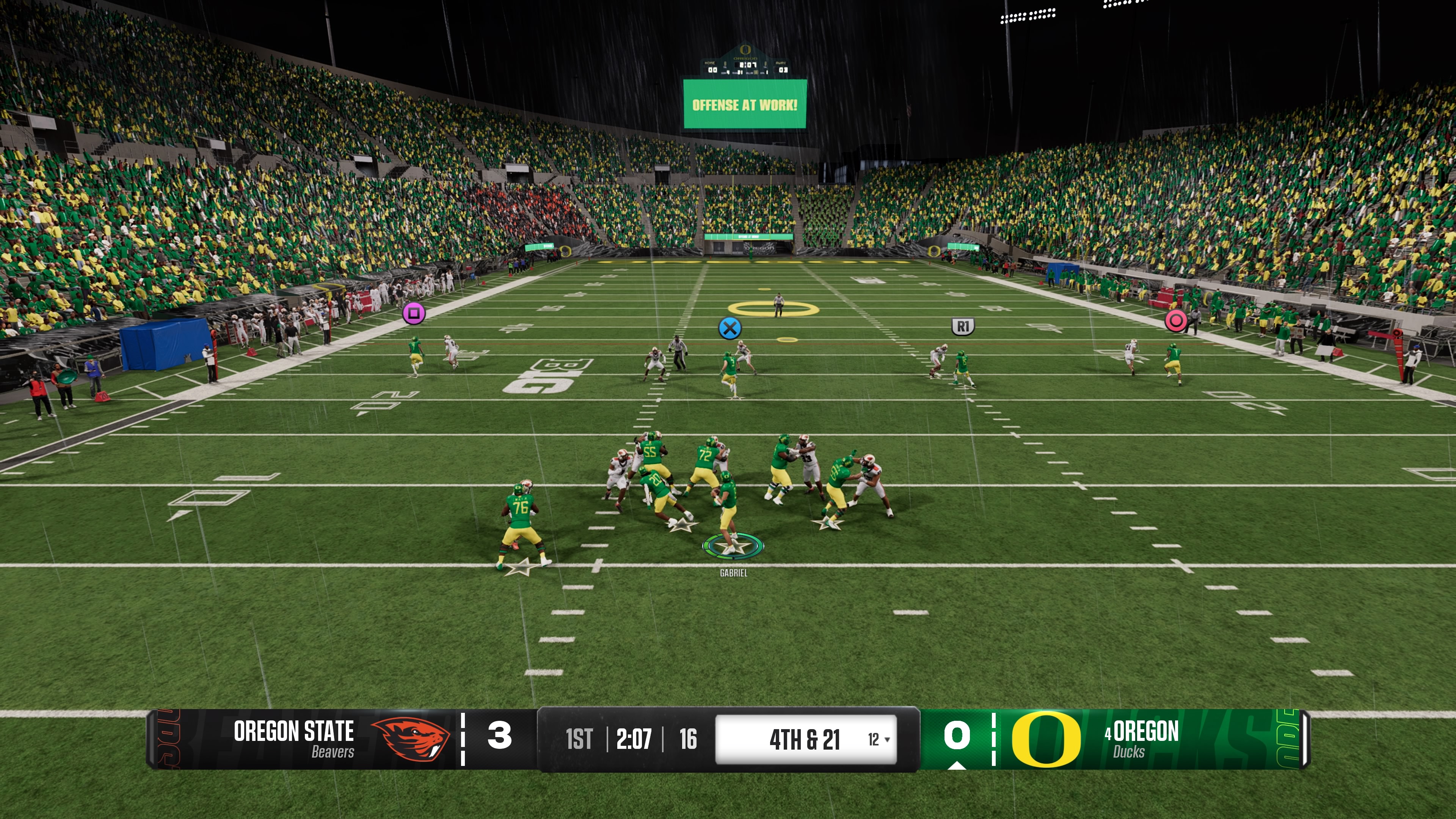
Unlike every other mode in the game, when you’re on the field, you only control your player. So, if you’re a running back, you can block or run, but you don’t control the quarterback or call plays.
One issue I had as a bench warmer was the practice mode. There are only a few mini-games and they get repetitive quickly.
Getting the coach’s trust XP bar up lets you eventually battle it out to be a second-stringer and eventually, the starter. You can sim practice, but as a non-starter, it means you’re simulating 90% of the season until you win the position battle.
It’s mostly just allocating some points to the education, social, leadership and skills bars. Balancing them is too easy and I never really felt like my choices mattered that much. Unless you play an elite or top three-star athlete, skip this mode. The grind isn’t worth it.
Ultimate Team

If you ever picked up a controller and tried an EA Sports game in the last decade, you have seen Ultimate Team.
Unlike 2K’s Sports’ efforts of late, this is the one spot where EA pushes microtransactions. You pay for card packs to get better players, uniforms, stadiums, coaches, etc.
The new addition to Ultimate is called Chemistry. As you open packs you can set up your roster to either have team chemistry where the players boost each other, or scheme chemistry where you put the best player for a specific playbook, like the Pistol, as a starter.
There are also item cards you can attach to individual players with abilities like “Pull Down” which makes the player less likely to fumble the ball.
You can use your team in Solo seasons against the CPU, head-to-head and squad seasons. Squads lets a group of gamers take on roles on an Ultimate team including Head Coach, Offensive captain and Defensive captain. Finally, there is the Gauntlet where you try to keep your win streak going. If you get 10 wins, you get lots of rewards, while two losses take you out.
Ultimate Team is not my preferred way of playing the game. However, it works well, and there is a ton of depth for those who love the challenge.
Road to the Playoff
This mode serves as a non-Ultimate Team competitive mode. You pick a team and play games to earn points by beating other players. If you win 10 games, you get a crack at the CFB playoff and the National Championship. There are different skill tiers, and you need to win games to rank up.
I didn’t win 10 games and turned this mode off after the third game against a child who cursed every five seconds. That’s on me for not auto-muting everyone.
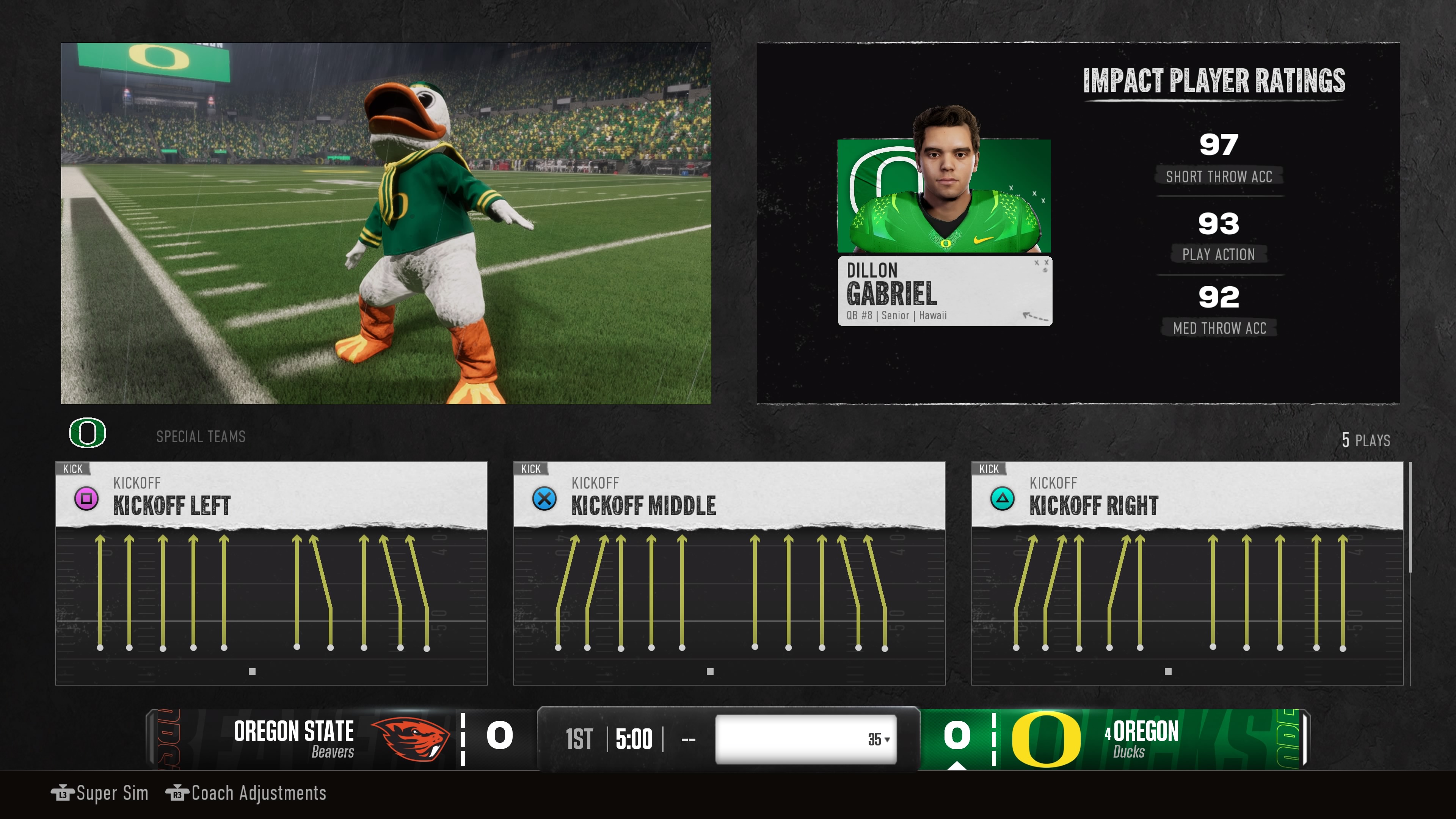
Dynasty
Of all the modes, Dynasty is the one where players will see the most shine. Compared to NCAA 14, recruiting players gets a complete overhaul, along with the coaching system.
Now, you pick an archetype role for your coach at the start of the dynasty. There are three to choose from: motivator, recruiter and tactician. It’s like an RPG system where you can choose to be elite in one area or hybridize a couple of areas. Unlike previous systems, you can’t just XP-spam your way to having all of the upgrades. You do need to strategize.
The recruiter is pretty obvious. As your coach progresses, you can put points into skills that make them better recruiters. This can be focused on specific player groups like offensive linemen and can do everything from give you more points to spend on linemen when recruiting or sway players away from deal breakers.
The motivator is built around improving player development as the season and dynasty progresses. Players will almost always improve, but this archetype makes it go faster or helps alter their skills.
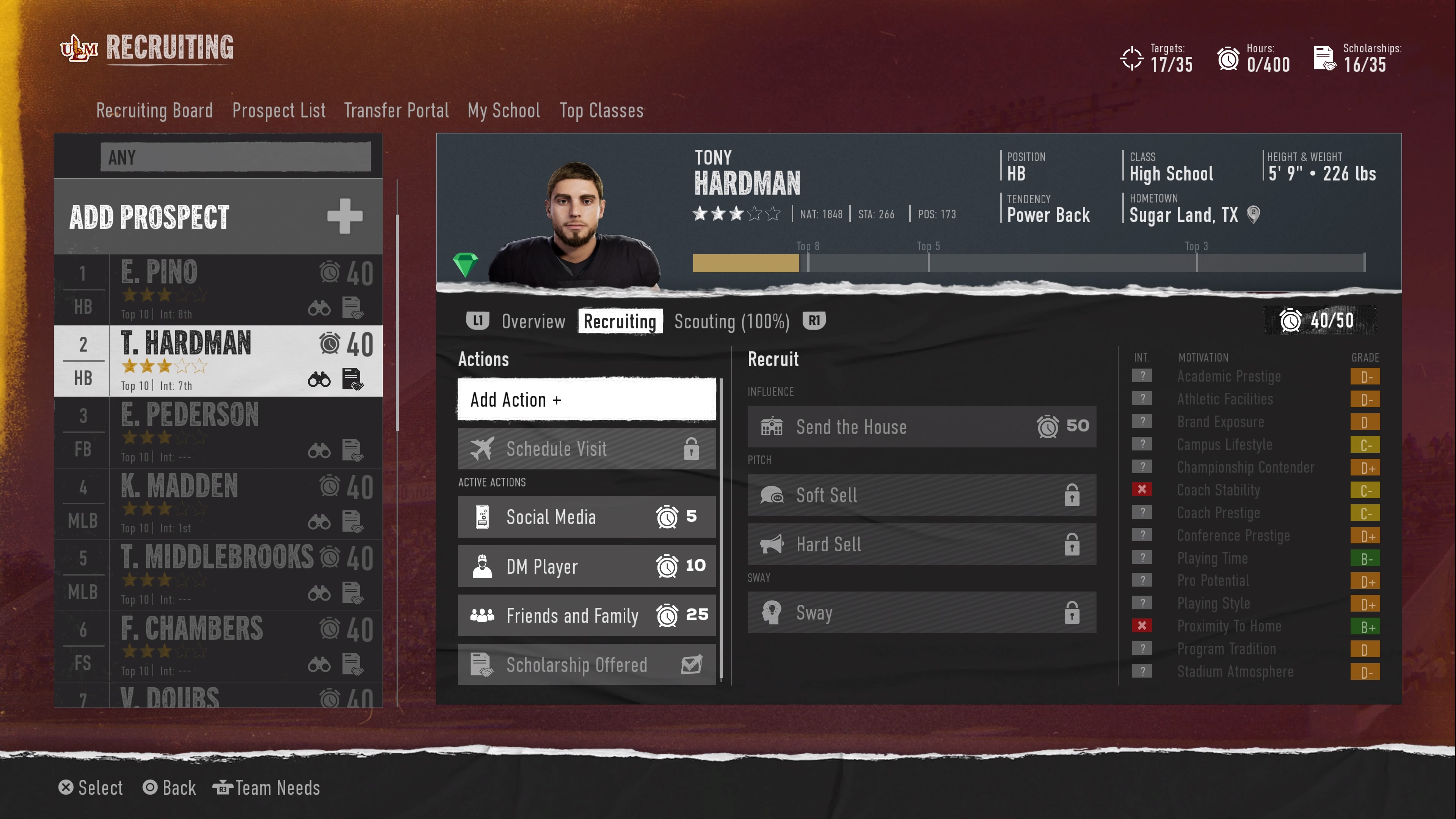
The tactician is all about the scheme and how ready players are on gameday. This one can boost player ratings on gameday. Points can be allocated to skills among all three but it’s better to focus on one or two to really get the gains.
Dynasty is deep. The recruiting mode has 14 different attributes that players consider when looking at schools and you’ll need to figure out how offensive and defensive coordinators complement the skills you’ve paid into.
There is fun to be had in trying to steal recruits away from bigger schools by appealing to their dealbreakers like “Close to home” or “Social Scene.” The points allocation during recruiting every week of the season makes you consider what players you pursue. Do you send the house at that one four-star who might pick Kennesaw State over Georgia, or do you send a little bit to a group of players to ensure a larger, stronger class?
We could spend an entire review getting into the nitty-gritty of how recruiting has changed for CFB 25. Suffice it to say, it’s a welcome improvement and the systems are engaging enough that you’ll want to see how the different archetypes interact with recruiting and improving players.

Concerning coaches, EA has introduced a new coach carousel at the end of the season. During the bowl season, coaches can be fired, hired or extended. Even established coaches can receive job offers. The carousel takes place over five weeks, so you don’t need to make a decision right away.
It’s pretty cool and my favorite feature is that if you take a new job, you can still coach in the team’s bowl game, if you made one.
In the 10-plus years since the last college football game came out, the sport itself has seen massive upheavals. When NCAA 14 launched there was no college football playoff. Now starting in the 2025 season, there will be a 12-team playoff.
Fortunately, EA has added the playoffs to the game and it’s great. They’ve also kept the ability to alter conference team members. So, if like me, you want to revive the Pac 12 by shoving all the defectors back into that conference you can. You can’t rebuild the Big East officially, but there’s no one stopping you from trying.
Team Builder
Team Builder was not available when I reviewed this game. However, it looks much like the version that launched with NCAA 14, with more details.
One feature that is annoyingly missing is the ability to create a prospect in Dynasty mode or just in general. Editing players is mostly limited to the jersey numbers and height and weight. I’m not certain if this is related to issues with having live player likenesses in the game or not but it’s unfortunate that this feature isn’t available.

EA Sports College Football 25 verdict
College Football 2025 is the revival game that EA had to put out to satisfy fans. I’m certain that if they had just graphically updated NCAA 14, many people would be happy just to see a new game. However, EA Orlando took the time and really considered the game and what would make players happy going forward.
There are flaws, like the lack of a tutorial mode and a bare-bones Road to Glory, but that shouldn’t put you off picking this up if you're a college football fan. The gameplay is great and the substantial Dynasty updates will have your tiny 1-star school winning National Championships for years to come.







